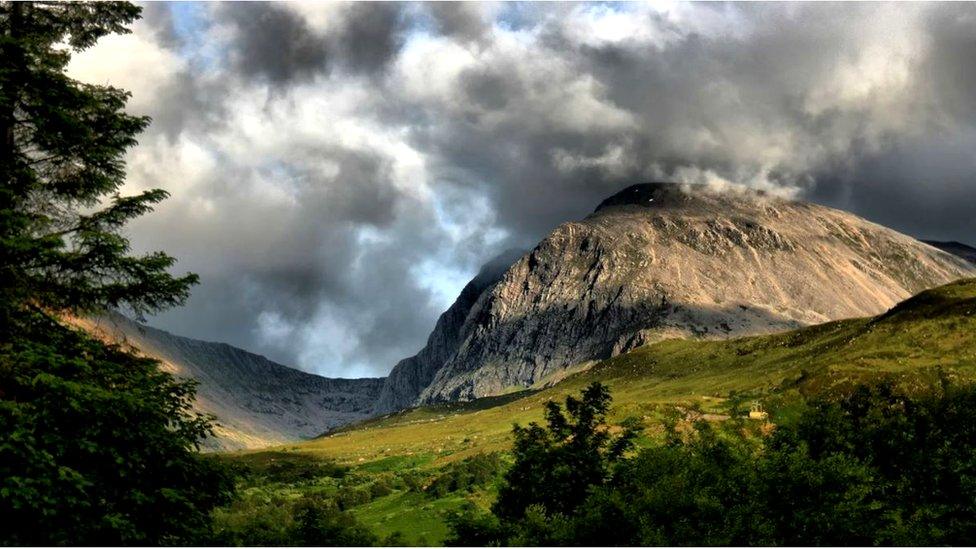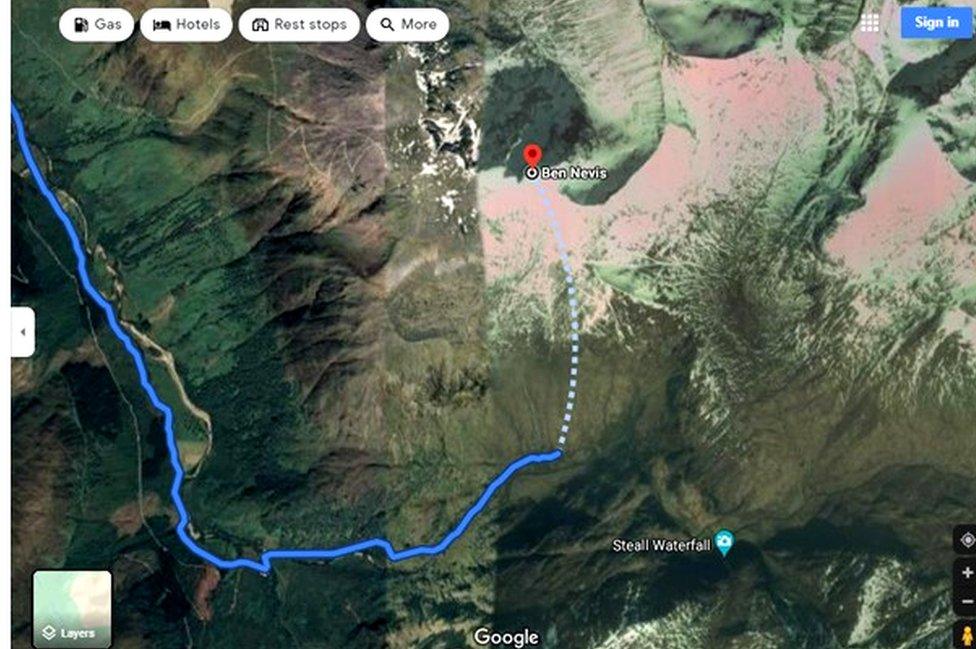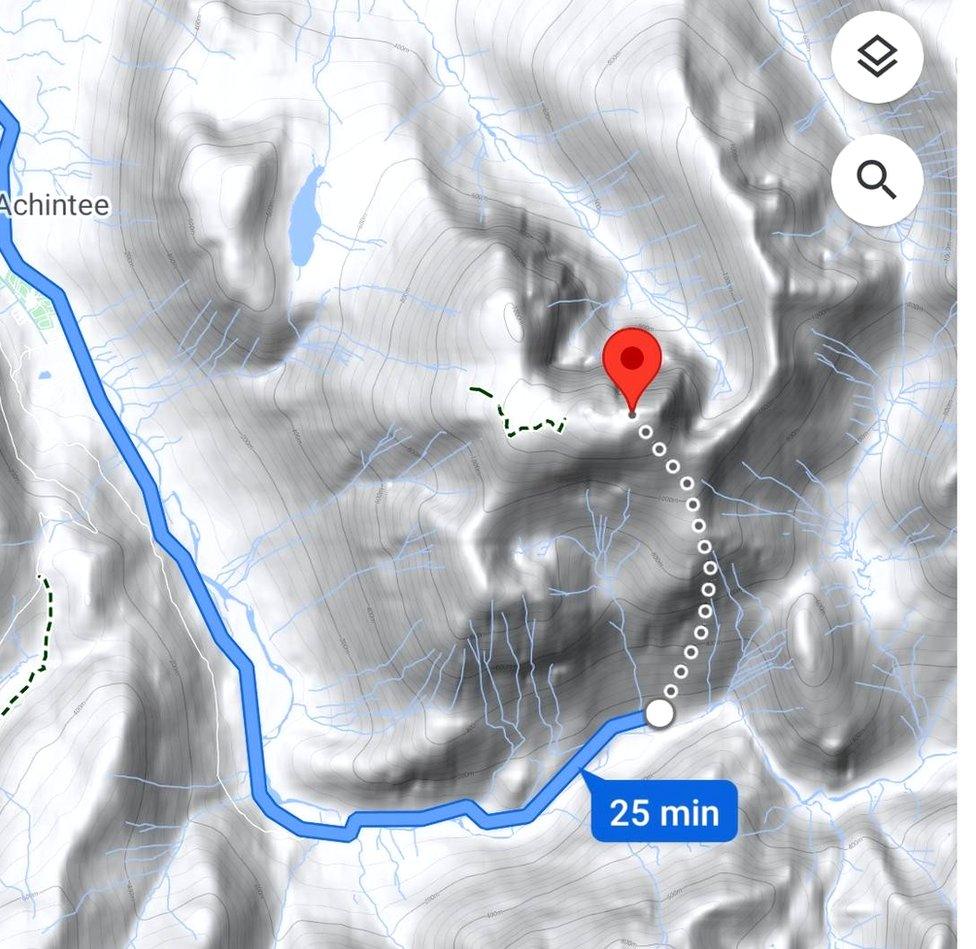Google Maps' Ben Nevis route 'potentially fatal'
- Published

Google has been criticised for suggesting routes up Ben Nevis and other Munros which are "potentially fatal" and direct people off a cliff.
Scottish mountaineering charities have urged hill-walkers not to use Google Maps to guide them up the mountains.
They said there have been a number of recent incidents involving routes downloaded off the internet which have resulted in "injury or worse".
Google told BBC Scotland it was investigating the issue.
Earlier the John Muir Trust, which looks after the summit of Ben Nevis, said it has attempted to raise the issue with the internet giant but its approaches have been "met with silence".
Inexperienced walkers
The charities said certain searches for the route up Ben Nevis on Google Maps direct people to the car park nearest the summit as the crow flies.
However they describe the route from that point as "highly dangerous, even for experienced climbers".
Nathan Berrie, the trust's Nevis conservation officer, said they often come across groups of inexperienced walkers heading towards Steall Falls or up the south slopes of Ben Nevis.

One route on An Teallach led walkers to a cliff and another on Ben Nevis took the user through rocky, pathless terrain
Heather Morning, Mountaineering Scotland's mountain safety adviser, said: "For those new to hill walking, it would seem perfectly logical to check out Google Maps for information on how to get to your chosen mountain.
"But when you input Ben Nevis and click on the 'car' icon, up pops a map of your route, taking you to the car park at the head of Glen Nevis, followed by a dotted line appearing to show a route to the summit."
She added: "Even the most experienced mountaineer would have difficulty following this route.
"The line goes through very steep, rocky, and pathless terrain where even in good visibility it would be challenging to find a safe line.
"Add in low cloud and rain and the suggested Google line is potentially fatal."
'Internet routes resulted in injury'
Other popular Munros have also fallen foul of the app.
The charity said for An Teallach in the north-west, a "walking" route suggested by search engine would take people over a cliff.
Ms Morning said: "It's all too easy to assume that information on the internet is all good stuff, correct, up to date and safe.
"Sadly, experience shows this is not the case and there have been a number of incidents recently where following routes downloaded off the internet have resulted in injury or worse."
She added: "Walkers and climbers with even a little experience will know to read information from a map, whether digital or paper, and if they are looking for downloadable routes know to use reputable sources and check several sources to ensure the information they are accessing is the right route for their level of experience and ability."

The Google maps app takes the most direct route, which can also be dangerous terrain
Mountaineering Scotland and John Muir Trust recommended climbers cross-check information on a map or consult a local guide.
A spokesperson for Google said: "We built Google Maps with safety and reliability in mind, and are working quickly to investigate the routing issue on Ben Nevis.
"In addition to using authoritative data and high definition imagery to update the map, we encourage local organisations to provide geographic information about roads and routes through our Geo Data Upload tool."